We crossed the border into Nepal in the early morning hours, having just spent the past seven days exploring Tibet.
We may earn affiliate commissions from websites we link to, at no cost to you. Click here for details.
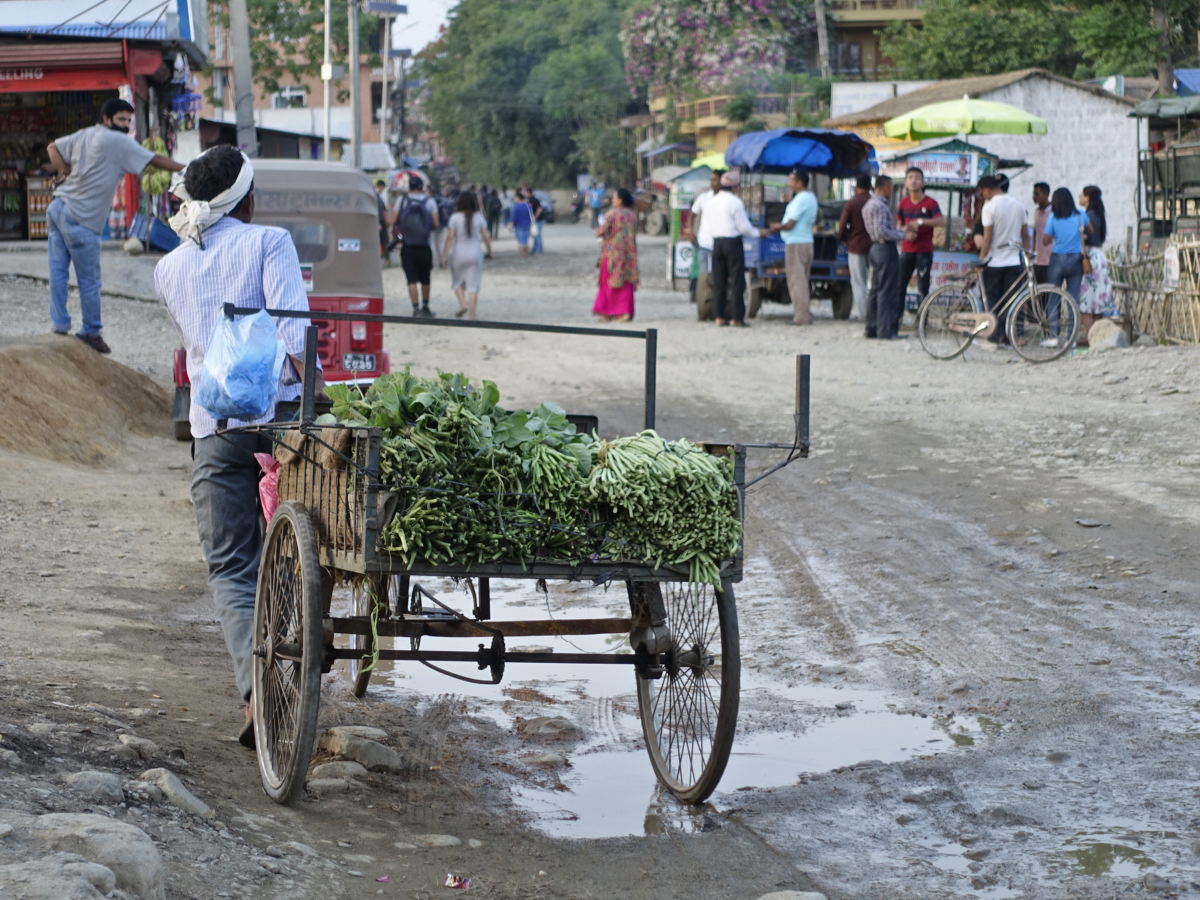
We had arranged a short tour to Chitwan National Park in Nepal with the hope of soaking up the sun and enjoying some wildlife. Our jeep transfer took us around eleven hours to reach our hotel in Kathmandu.
It felt great to be back in a country we love so much.
We’ve visited Nepal years ago, however, we couldn’t resist dropping back in to see some parts of the country we didn’t see last time.
It was already decided that our trip to visit every country in the world has to include some travels to our favourite countries. Nepal is definitely one of them.
Our 2 night/ 3 Days in Chitwan Tour included return local bus transport from Kathmandu to our hotel in Sauraha, 2 nights accommodation at Hotel Parkland and all wildlife activities, park permits and a guide.
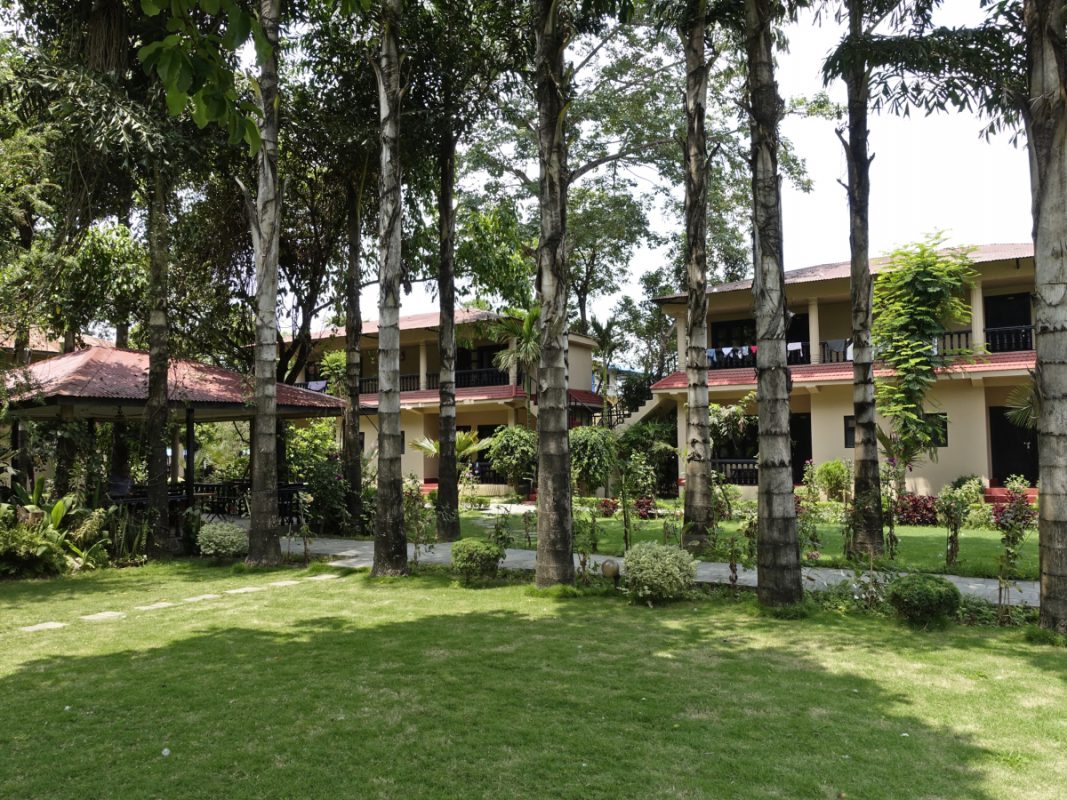
The early morning bus journey from Kathmandu took seven hours, with a few short breaks.
Upon arrival, our hotel room was very nice, and the gardens were spectacular. Our guide explained the program for the next few days, designed to take in as many activities inside the park as possible during our time here.
We had a few hours to freshen up, eat lunch and enjoy a quick dip in the pool before we set off for a walk to explore the area. A few other guests joined us as we wandered around the outskirts of Sauraha. The town is very relaxing.
The locals can be seen riding bicycles around, and I noticed it was all very green and abundant with crops of fresh corn and rice paddies.
We wandered along the river of Sauraha with our guide, learning about birds and the area. We were excited to stumble upon two one-horned rhinos bathing in the river. These animals are magnificent.
We watched them meander in the river for a while; it’s such a wonderful feeling to watch animals in the wild.
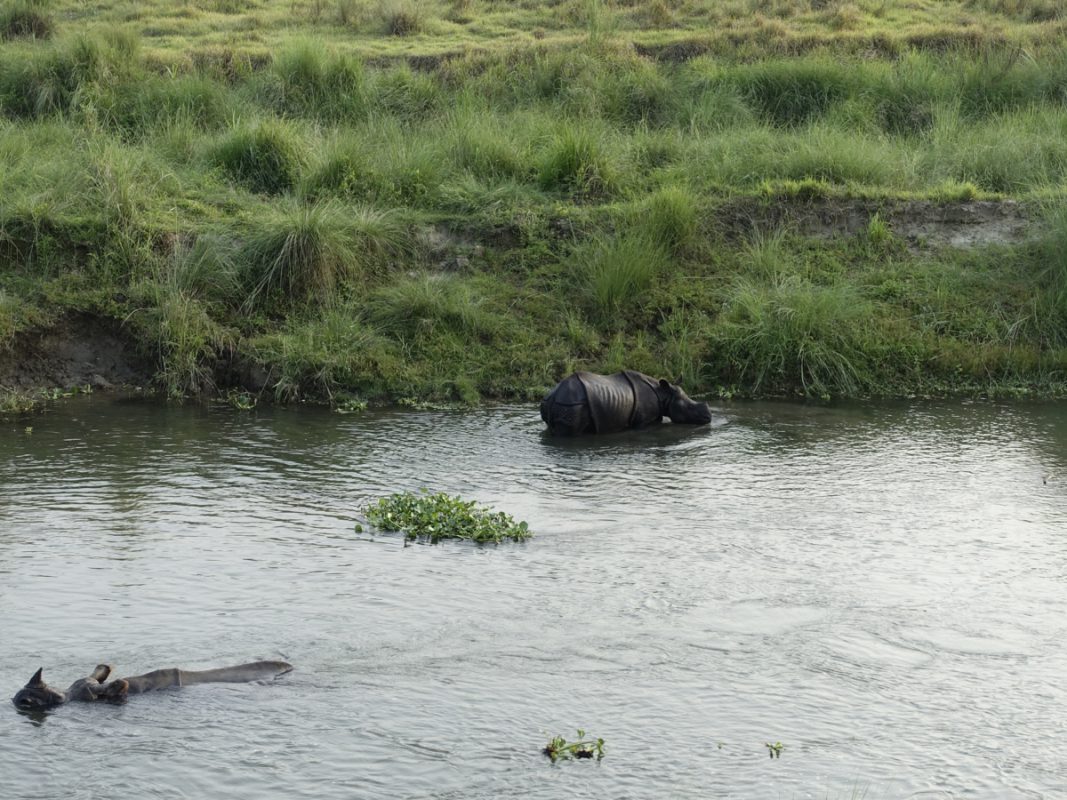
We reached the hub of Sauraha town, along the riverfront and sat down to enjoy some cold Nepalese beers with views of the sun setting, always my favourite part of the day.
Afterwards, we returned to our hotel, passing by guesthouses, shops and delicious Indian/Nepali hawker food. I couldn’t help myself, so I ordered a plate of panipuri – delicious hollow crackers full of mashed vegetables with heaps of flavour and spice. The best snack ever.
We had early morning activities planned for the next day to avoid the heat, so we ate dinner and were happy to get an early night in our comfortable room.
Wildlife Safari in Chitwan National Park
We started the following day in Chitwan with a relaxing dugout canoe ride and jungle walk. Our group of ten boarded the canoe with tiny seats and sat back to enjoy the views of the river and green jungle along the way.
We spotted a few crocodiles resting in the shallow waters and many species of birds, including kingfishers, egrets and wagtails.
After thirty minutes, we disembarked and walked back toward town through the jungle, eager to view some wild animals.
The jungle walk was peaceful, yet uneventful in seeing any wildlife. Perhaps we’d see some later on our Jeep safari when the temperature drops slightly.
- 🔥 Hot Tip: Book accommodation in advance on Booking.com
- 🎟 Book your attractions and tickets online: We recommend Viator and GetYourGuide
- 🔋 Stay charged: This Belkin Power Bank is essential!
- 📸 Join a Group Tour: Find some amazing Group Tours here
- ✅ Get Connected with an eSIM: Fast, easy and affordable! View easy eSIM options here
Exploring the Local Culture
Part of our activities in Chitwan National Park included a walk through a Tharu village. The Tharu people are an ethnic group in southwestern Nepal native to the Terai region, a plain region that includes Chitwan and other areas.
The houses of the Tharu people have clay walls and thatched roofs, both features that allow the homes to stay cool in the dense summer humidity. They’re very self-sufficient, living off the land and crops they plant. They farm many animals to provide milk, cheese and curd (yoghurt).
After our visit here, we were shown the elephant breeding centre; then, we had an option to bathe with the elephants nearby at the river.
Here, the mahouts or elephant trainers were scrubbing the elephants. You have the option to join in for a small fee.
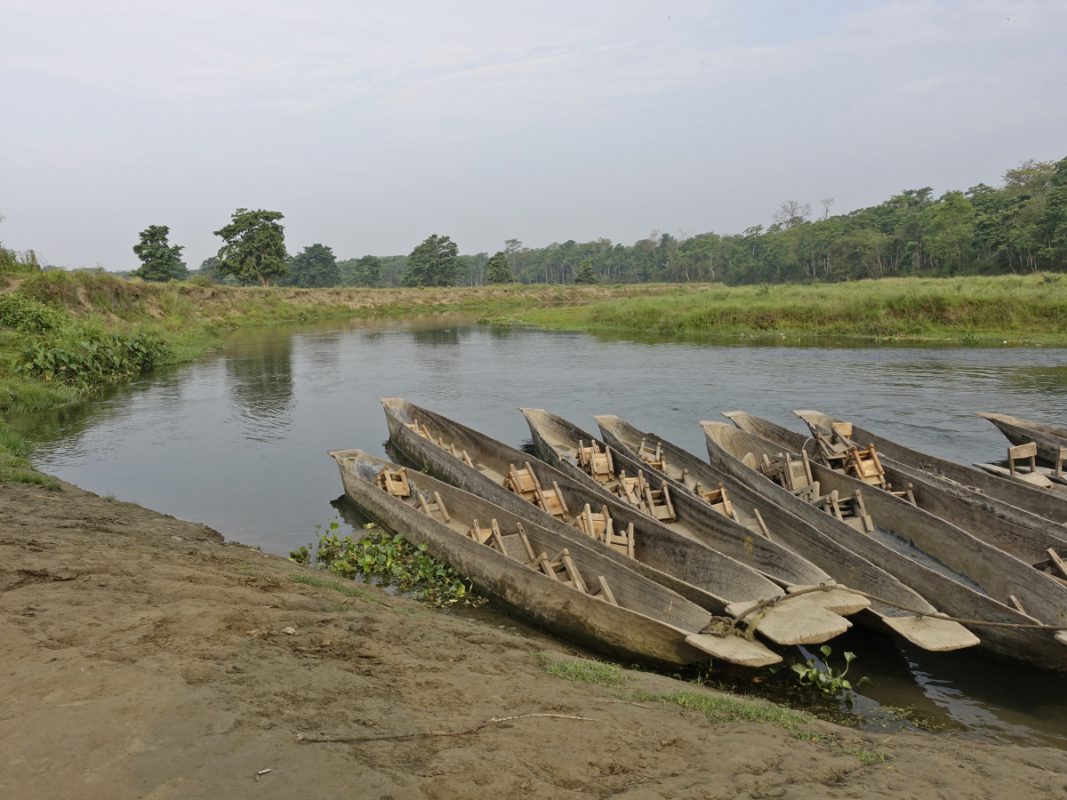
Returning to our hotel for lunch to escape the heat was nice. Finally, it was time for our safari! This is what we came for!
We could take either an elephant safari (riding on the back of an elephant through the jungle) or a jeep safari in the jungle.
We chose to do the jeep safari as we prefer to engage in ethical elephant tourism when we travel. Find out more about this here.
We were dropped off in town, took a very short canoe ride across the river, and climbed aboard our open-top jeep with another 8 people and our guide.
We spent the next four hours driving deeper into the jungle, searching for wildlife. We viewed a handful of one-horned rhinos, several wild elephants, monkeys swinging between trees, wild boars, crocodiles, and many birds, including the beautiful peacock.
I found the whole experience quite relaxing. We didn’t find any Bengal tigers, but honestly, these big cats are extremely hard to find due to the low numbers left in the wild and the size of Chitwan National Park, approximately 942 sq metres.
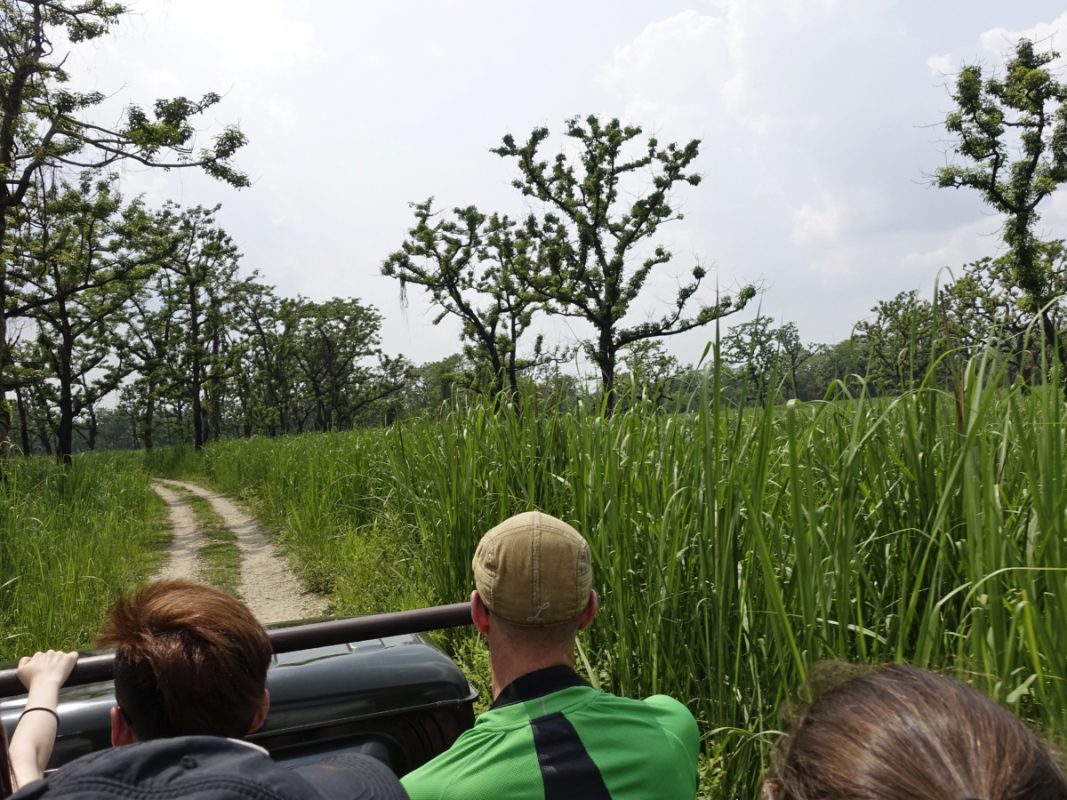
Should You visit Chitwan?
I found our visit to Chitwan to be a welcome break in Nepal. It was informative and enjoyable; however, you shouldn’t expect to be hiking through a wild jungle viewing masses of wildlife.
I’d describe the experience as more about learning about wildlife and conservation, with some fun activities available. The jeep safari experience was the highlight of my stay here.
What should you bring when visiting Chitwan National Park?
Chitwan can be a very wet, humid, and forested area. Pack clothes for hot, sunny days during the day and lightweight clothes that cover your arms and legs in the evenings to prevent mosquito bites.
It’s a good idea to pack some good mosquito repellant and sunscreen. You can also purchase small bottles of mosquito repellent from the little shops in town for about $4.
How to Get to Chitwan
Sauraha is the town outside of Chitwan. Fancy resorts are on the outskirts of Sauraha, but you’ll find lots of budget accommodation and affordable guesthouses in town.
CLICK HERE to view all properties in Sauraha on Booking.com.
It is also possible to get to Sauraha using public buses. These run directly from Kathmandu and Pokhara, each taking 6-8 hours, depending on the traffic and road conditions.
Buses surprisingly run on time, so arrive with time to spare in the morning, or you will miss the bus out of Thamel, the tourist hub of Kathmandu.
Expect to pay approximately 700Rs for the journey.
For those who are short on time or have the cash to spend on flying here rather than taking the bus, there is also an airport located 10 km outside of Sauraha in Bharatpur.
It’s good to be prepared with the best information before you travel to Nepal. We recommend getting a copy of the Nepal Lonely Planet guidebook (with a 10% discount) to organise your trip.
Even if it’s just for planning a rough idea of which areas you’d like to visit, this book is always handy in your small travel day pack (this Osprey Day pack is excellent).
Travel Tips for Nepal
If you’re interested in travelling further in Asia after Nepal, I’d recommend you consider this 5 Day Tour from Kathmandu to Lhasa, Tibet. We did this trip in reverse, but it was incredible!
Read more about our experience in Tibet and everything you need to know before you go.
Our Ultimate Food Map of Asia will inspire you about where to head after that!
Many travellers navigate towards Southeast Asia, in particular, Thailand! Did you know that this is my favourite country in the world? Seriously, this is my favourite of all the countries I’ve visited.
Why? Here are 15 Amazing Places to visit in Thailand to get started. I love the Kata Beach area on the big island of Phuket. With so many excellent things to do in Kata Beach, something about this area of Thailand appeals to me.
If you decide to go to Thailand, check out my 26 Top Travel Tips for Thailand, they’ll come in super helpful.
Travel Planning Resources
✈️ Flights: We use Skyscanner to book cheap flights worldwide.
🏨 Accommodation: Booking.com is our preferred platform for booking hotels and accommodation.
🏥 Travel Insurance: We recommend Heymondo (Get 5% off Heymondo) & SafetyWing
🚌 Transportation: Trainline is the best website to reserve trains. We use Omio to book transport worldwide. For travel in Asia, we use 12Go.
🚘 Car Rental: We use DiscoverCars to book rental cars worldwide.
👫 Group Tours: G Adventures OR compare multi-day tours worldwide with Tourradar.
📸 Day Tours & Trips: GetYourGuide & Viator are the only two platforms you need.
📚 Lonely Planet: The Best Range of Travel Guides & Ebooks, and FREE Shipping! (use code RACHELDAVEY10 for a 10% discount)
🎒 Luggage: Osprey Farpoint 40L Backpack or Samsonite Luggage Range.
🛄 What to Pack: Don’t forget your Universal charger and a good power bank. To help you pack the essentials, here is our ULTIMATE Packing List for all Travellers.
🐶 Become a House Sitter: Join Trusted Housesitters and enjoy FREE accommodation worldwide. Use our invite to receive 25% off your new membership.
💰 Send Money Anywhere: WISE & Revolut are the best online accounts that let you send money, get paid, and spend money internationally. Both are so easy to use and way cheaper than any bank transfer.
📶 Stay Connected: Airalo eSIM allows you to get connected the moment you land at your destination, and you can avoid those expensive data roaming charges. We LOVE this product! Use promo code NOMAD15 for 15% off ALL eSIMs (new Airalo users only) OR use NOMAD10 for 10% off ALL eSIMs (for existing Airalo users)
✅ Check out our Travel Gear and Travel Resources for more valuable tips to save you money!


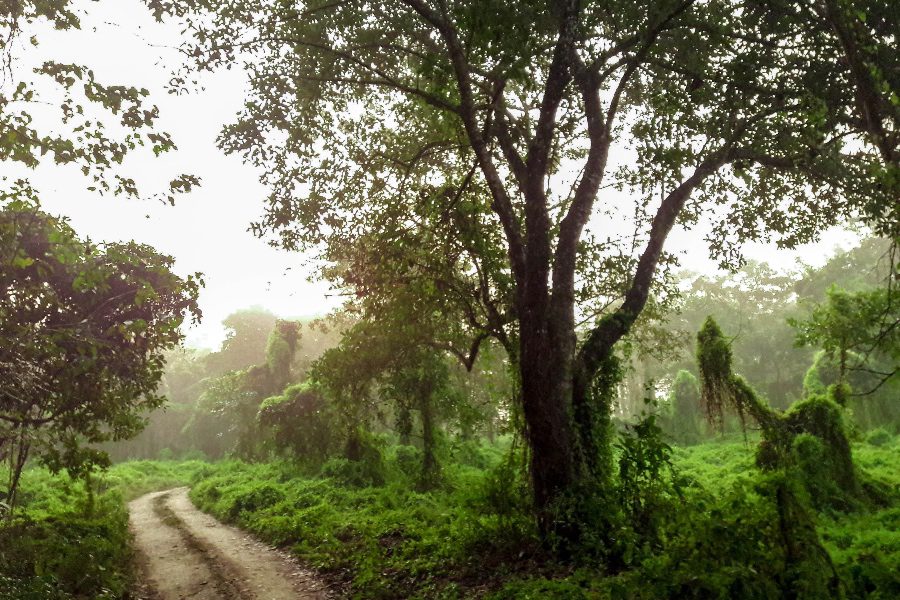
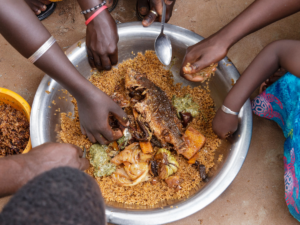
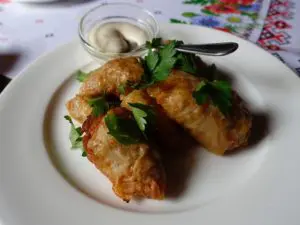
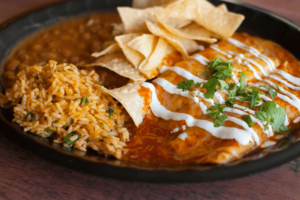
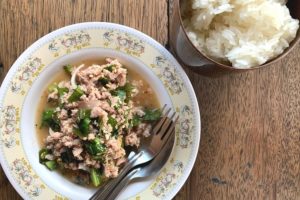
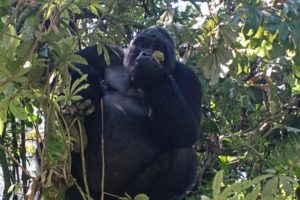
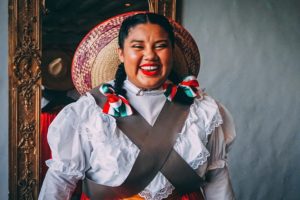
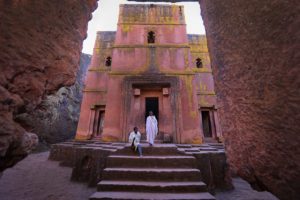
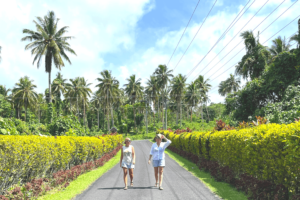
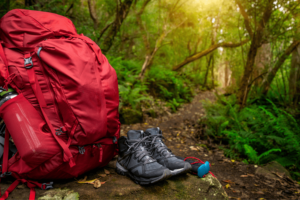
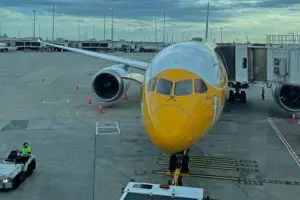


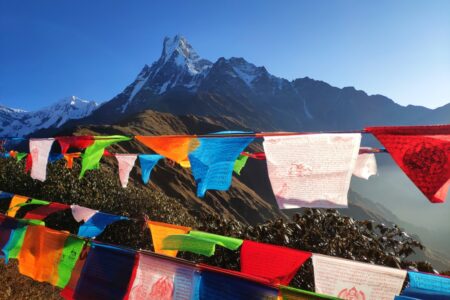

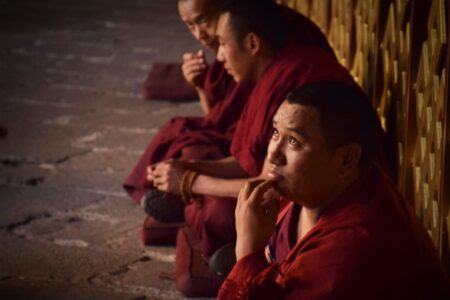
1 Comment. Leave new
Chitwan National Park is listed on World Heritage List since 1984. The Chitwan national park is the home for the rear Royal Bengal Tiger and other in dangered species. One-horned rhino is the main attraction.
Jungle safari to Chitwan National Park is the ultimate safari tour of Nepal. Thank you for exploring the resources of Nepal.